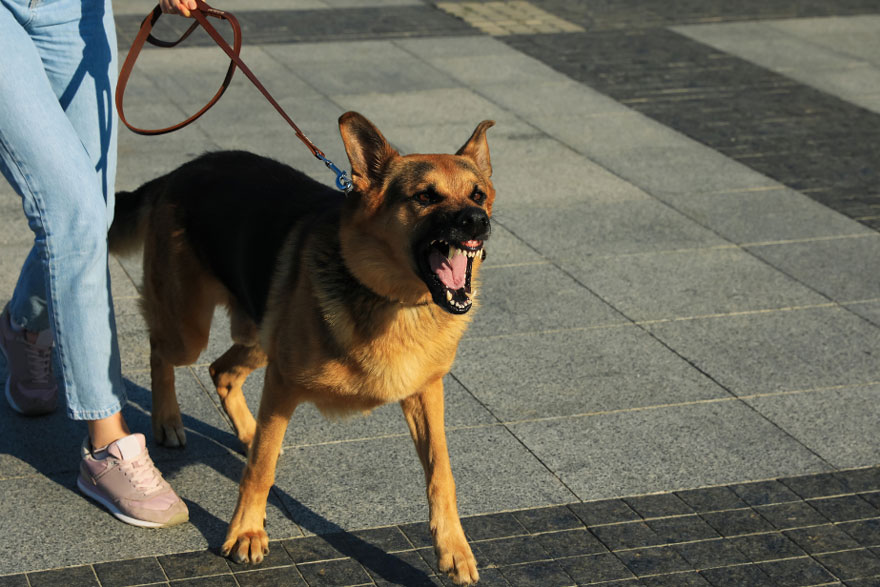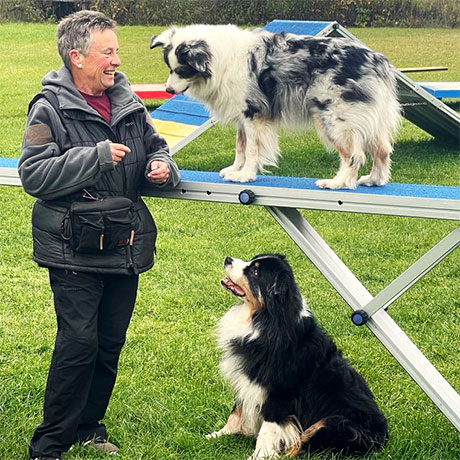Leash Reactivity: what you need to know so you can have calm, happy walks with your dog
If a walk with your dog feels more like a battle than a bonding experience, you’re not alone. Leash reactivity is a very common issue that can make even a simple stroll stressful. Understanding what leash reactivity is and how to deal with it can make a big difference. Let’s break down leash reactivity, what causes it, and how you can work with your dog to enjoy peaceful walks again.

What is Leash Reactivity?
Leash reactivity happens when your dog overreacts to things they see (we call them triggers) while they’re on a leash—like other dogs, people, bikes, or cars. This might look like barking, growling, lunging, or just generally being upset.
A lot of times, this happens because your dog feels frustrated, frightened, or overly-excited. The leash is restricting them, so they can’t approach something they want to access, or run awayfrom whatever they see as a threat. And since they feel “stuck,” they might act out by barking or lunging as a defense. They have no choice or autonomy in the situation which is naturally upsetting.
How Do You Know if Your Dog is Leash Reactive?
Leash reactivity can look different for every dog but here are some common signs your dog might be leash reactive:
- Lunging or pulling: They’re either trying to charge toward or away from whatever’s causing them to be upset.
- Barking or growling: This is how they express their stress or excitement.
- Stiff body posture: A tense body can be a sign of high stress or arousal.
- Raised hackles or tail: This could be a sign of fear or aggression.
- Whining or heavy panting: Some dogs show anxiety with vocalizations or by panting a lot.
If your dog is consistently acting like this when they see other dogs, people, or things while on a leash, then yes—they’re probably leash reactive.
Can You Fix Leash Reactivity?
The good news is that leash reactivity is something you can reduce substantially with consistent training and management. Common strategies to reducing reactivity would be:
- management to prevent behaviours from happening
- changing the dog’s emotional response to a more positive one
- teaching the dog to offer alternative behaviours to lunging and barking
Counter-conditioning: This is a science-based technique that changes your dog’s emotional response to the trigger by teaching them it can predict something they love – usually high value treats
Teach an Alternative Behavior: Teach them that they can offer a more appropriate behaviour in the situation. With enough practice and reinforcement you can replace those over the top reactions with calmer ones.
If this feels like a lot to handle, getting help from a dog trainer who specializes in leash reactivity can make a big difference. And while it won’t happen overnight, you’ll start to see progress with consistent practice.
Can You Still Walk a Leash Reactive Dog?
Yes, you can still walk your leash-reactive dog! You just need to manage the situation a bit more carefully. Here are some tips to make walks easier and more enjoyable:
- Pick quieter times or routes: Try walking during less busy times or in places where there are fewer triggers.
- Keep your distance from triggers: If you spot another dog or something that sets your dog off, cross the street or head in a different direction to increase space.
- Use helpful gear: Use a non-aversive anti-pull harnesses or a head halter to cut down on pulling
- Stay calm: Your dog can sense your emotions, so staying calm and focused helps them feel more secure.
- Practice some training on your walks:Work on loose leash walking or alternative behaviours that your dog likes .
Walking a leash-reactive dog does take some management, but it’s definitely possible with the right approach.
Leash reactivity can feel overwhelming, but it’s something you can work on with time and patience. By understanding your dog’s triggers and using calm, consistent training, you can help your dog stay more relaxed on walks—and make those strolls enjoyable again!
If this feels like a lot to handle, getting help from a dog trainer who specializes in leash reactivity can make a big difference. And while it won’t happen overnight, you’ll start to see progress with consistent practice.
